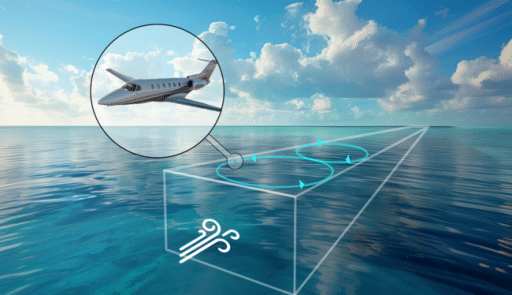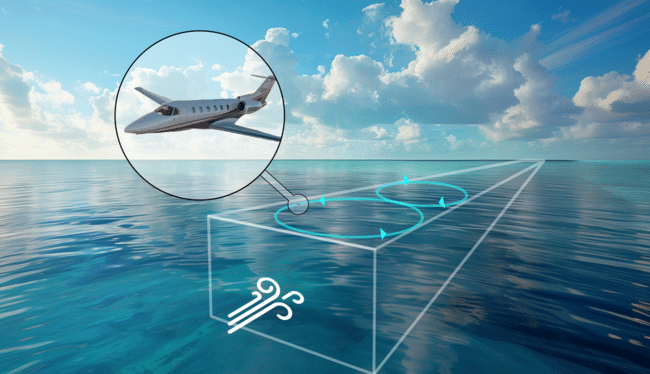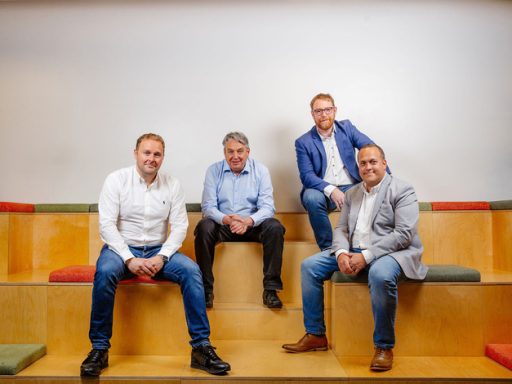Swiss-based AMR AG has announced plans to reduce global temperatures using an innovative technology. Aircraft will release nanoparticles of ferric chloride at altitudes of 2,000 to 4,000 metres above subtropical oceans.
AMR AG, short for Atmospheric Methane Removal AG located in Kreuzlingen, Switzerland, has engineered a method to decrease the global temperature by 0.5 to 1.0 °C over the next 20 to 25 years.
This achievement is set to be realised through the integration of three established techniques into a unified approach dubbed the GeoRestoration Action Plan (GRAP). The GRAP entails the aerial distribution of Iron(III) chloride (ferric chloride, FeCl3) at heights of 2,000 to 4,000 metres over iron-deficient subtropical oceans. The ferric chloride is released in its gaseous form from the engines of approximately 40 to 60 small jets, which will conduct several flights daily across various global sites, dispersing a total of 200,000 to 300,000 tonnes of the substance annually.
The GRAP will be implemented in three stages. Initially, a field test involving a single aircraft will administer small quantities of ferric chloride over the ocean to assess the technical feasibility, gauge atmospheric effects, and establish a foundation for the transition to operational status. This stage aims to reduce methane concentrations to 0.7 ppm by 2050. In the final phase, efforts will focus on maintaining methane at a sustainable level.
AMR is committed to a scientific approach, continuously monitoring, analysing, and assessing the outcomes of its interventions. The firm adheres to the EU precautionary principle.
Three “CoolTasks”
The primary CoolTask involves the oxidation of methane (CH4), which breaks down into CO2 and H2O due to the catalytic action of Iron(III) chloride and solar UV radiation. Given that methane’s warming potential is 120 times that of CO2, this transformation results in an immediate cooling effect. Presently, atmospheric methane stands at 1.9 ppm, approximately 2.5 times higher than pre-industrial levels, accounting for around 30% of current global warming. The cooling potential of reducing atmospheric methane is estimated at approximately 0.5 °C, with potential increases as methane levels continue to rise.
Additionally, the gas from the jet engines quickly condenses in the cold ambient air, forming solid nanoparticles. These particles act as Cloud Condensation Nuclei (CCN), reflecting some of the sun’s rays back into space, thus fulfilling the second “CoolTask”.
Lastly, as these particles eventually settle on oceans or land, the Iron(III) chloride transforms into iron compounds that plants can absorb, significantly enhancing photosynthesis in algae and other plants, which in turn captures more CO2 from the atmosphere.
Three Reasons
Firstly, this method is natural, having been employed by nature for millions of years through the use of iron-rich desert dust. As human activities have increased methane levels beyond nature’s capacity, rectifying atmospheric pollution is deemed a human duty.
Secondly, the safety of ferric chloride is well established, with widespread use in purifying drinking water. Its environmental and health impacts are thoroughly documented.
Thirdly, the method is energy-efficient, relying solely on natural forces like wind, sun, and ocean currents. Only the dispersal process requires airplane fuel, the emissions from which are vastly outweighed by the benefits of the method.
Cost and Investment
AMR AG projects the annual cost of the GeoRestoration Action Plan to be less than USD 10 billion. Over two decades, this could equate to the removal of about 3 Gt of methane, or 360 Gt of CO2, at a cost below USD 1.00 per ton of CO2e.
To date, funding for AMR has come from its shareholders and Carbonfix, a Dutch organisation that backs pioneering climate solutions at their inception. AMR AG is open to investors focused on addressing the severe climate crisis, although profit remains a secondary concern.
Oswald Peterson of AMR AG states, “All climate change comes from nature, good or bad. All we can do is treat nature well – so she heals the climate we have so massively perturbed.”







